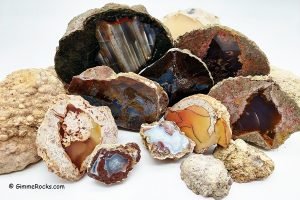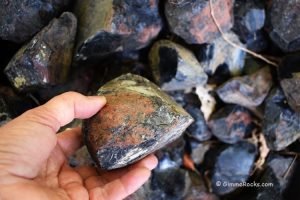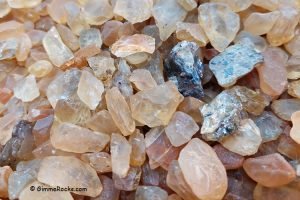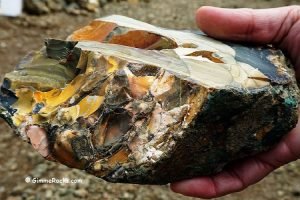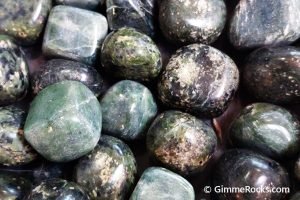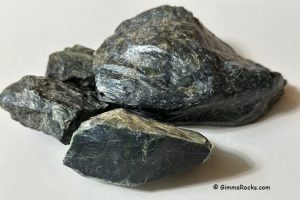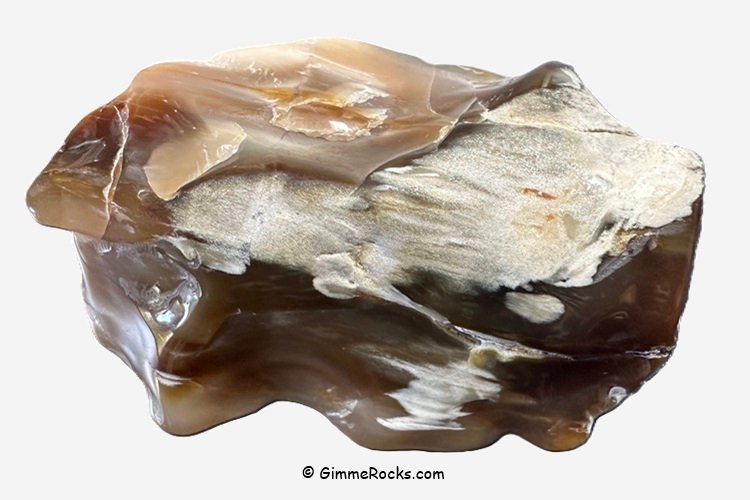
Petrified wood is the official gem of Washington State
Wood petrification occurs when an original organic tree or bush turns into a three-dimensional replica of itself, with all the organics of its trunk, branches, bark, and roots replaced by minerals.
Most petrified wood combines quartz varieties like chalcedony, quartz, agate, and jasper. Occasionally, other minerals like calcite, opal, or pyrite are encountered.
Several terms describe the process of wood-to-stone transformation, including mineralization, silicification, and petrification.
The term "petrified" comes from the Greek language. "Petro" means "stone."
Petrified Wood Formation
The formation of petrified wood is a complex process that takes a lot of time and requires specific geological conditions that often include volcanic activity with lava flows and volcanic ash.
The petrification process may be broken down into several stages, which we will briefly describe below. Those stages are:
- Burial
- Premineralization
- Replacement
- Crystallization
- Exposure.
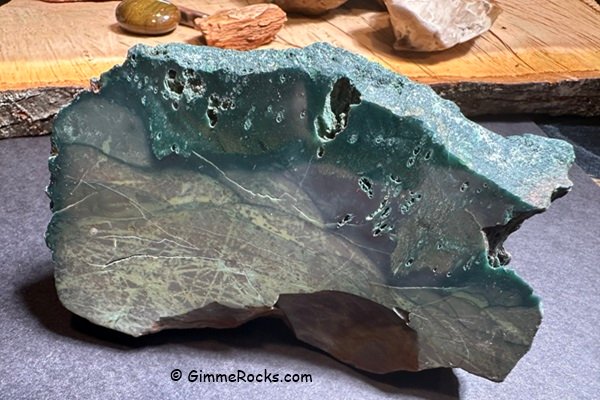
Burial
Petrification begins when wood is buried in an oxygen-free (anaerobic) environment, e.g., under sediment or mud, often with volcanic ash. The burial has to be deep, and it has to happen fast. Otherwise, the tree will start deteriorating.
The wood decays much more slowly without oxygen, keeping it mostly preserved and ready to turn into stone.
Premineralization & Replacement
The buried wood becomes saturated with groundwater rich in dissolved silica and other minerals contained in the volcanic ash. This mineral-rich water seeps through the porous wood, filling the empty spaces.
The combination of all factors, including the anaerobic environment, minerals-rich water, high pressure, high temperature, and a slightly acidic environment, makes petrification possible.
The walls of a plant cell are primarily lignin, while cellulose fills the cell cavities in living trees. During the early stages of petrification, cellulose dissolves, leaving only lignin, which is used as a template for mineralization.
Silica, often in the form of quartz, is the most common mineral responsible for petrification. The type and quantity of minerals involved in petrification determine the color of the resulting specimen, which can range from white and gray to vibrant reds, yellows, and greens.
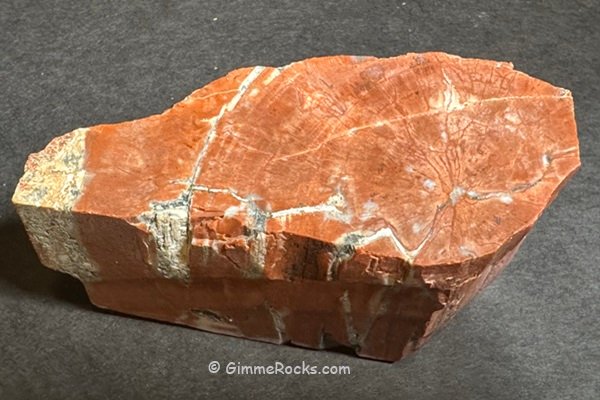
Crystalization
As mineral-rich water saturates the wood, the dissolved minerals settle along and between the cell walls. Over time, this liquid solution solidifies and hardens, turning what was once organic wood into fully fossilized stone.
Petrification tends to preserve the original structure of the wood in fine detail, with growth rings, veins, and bark, creating a stone replica of the original tree.
Exposure
Over millions of years, geological processes such as erosion or tectonic activity may bring these fossilized treasures to the surface, and that is how we discover them.
How Long Does It Take for Wood to Petrify?
Wood can petrify relatively quickly under the right conditions, sometimes within decades or centuries. The time frame for petrification depends on environmental factors, including the burial speed, the concentration of minerals in the groundwater, pressure, and temperature.
Among the most prominent examples of relatively fast petrification are:
- Petrified Fence in Washington: An old fence built in the 1800s in Washington State has become petrified, demonstrating that wood can fossilize within a few centuries.
- Rapid Petrification in Yellowstone: In Yellowstone National Park, wood submerged in hot springs has shown evidence of rapid petrification, courtesy of the mineral-rich water and high temperatures.
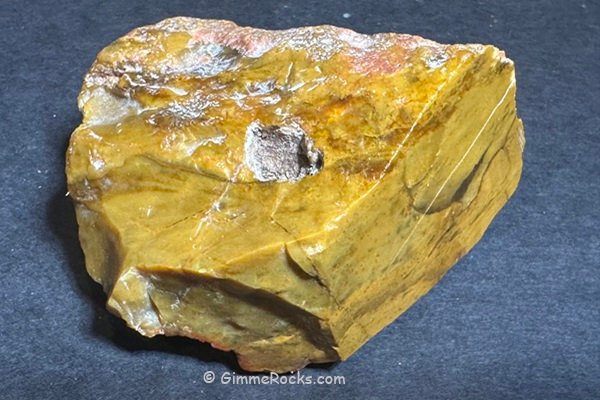
Which Wood Gets Petrified?
Most trees that got petrified date back to the period between the Late Paleozoic and the Cenozoic Eras (from 250 million to 2 million years ago). The species of the petrified ancient trees that have been found today include bald cypress, magnolia, sequoia, walnut, myrtlewood, sycamore, birch, araucaria (a genus of coniferous trees related to the modern-day Norfolk pine), cedar, ebony, ginkgo, and palms.
Petrified Wood Color
Minerals participating in petrification determine the appearance, colors, and patterns observed in the resulting specimens. Below, we list some of the minerals involved in petrification and how they influence the fossilized result.
Quartz. Quartz, in its pure form, is colorless, transparently gray, or milky white. Combined with carbon and metallic impurities, however, it produces a wide range of colors:
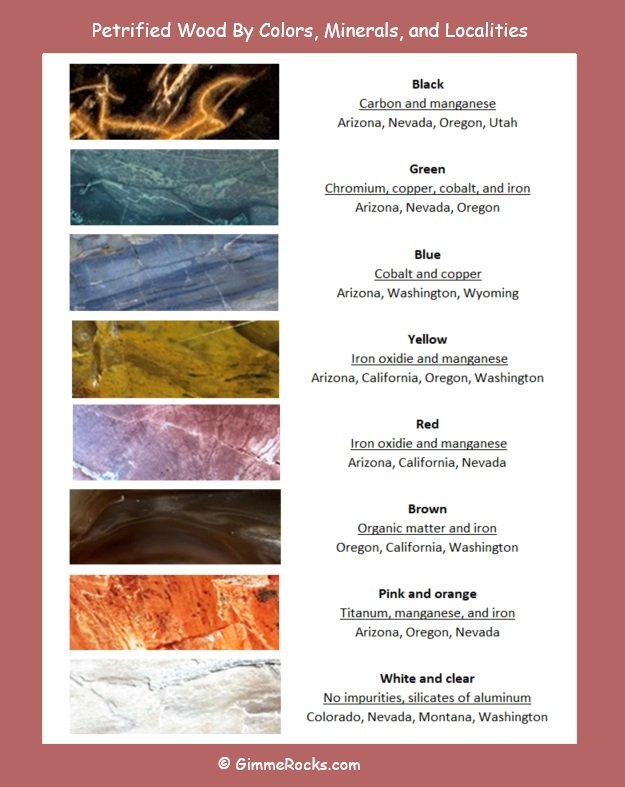
Opal. Opalized wood can display various colors, including white, gray, yellow, and red. The most valuable are those that produce a kind of iridescent multicolored "fire," where colors change with light and angle.
Calcite. Calcite produces white, blue, and gray hues.
Pyrite. Pyrite gives a distinct metallic appearance.
Lapidary Uses of Petrified Wood
Petrified wood is a popular and highly prized material in lapidary arts and collections. A wide variety of wood types, colors, and patterns makes it highly sought after by collectors worldwide.
Petrified wood's vivid colors come from different trace metals, and its ability to take a smooth polish adds to its appeal. Large petrified logs are prized, mainly when they produce round slices showing the tree's cell structure.
Lapidary enthusiasts often tumble, cut, and polish petrified wood to create beautiful pieces like cabochons. However, it's essential to check for cracks or fractures when working with petrified wood, as these are often found in pieces that have been weathering on the ground for a long time.
Best Petrified Wood Collection Sites
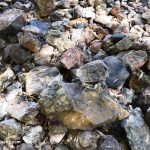 Interactive Petrified Wood Collection Site Map displays the best rockhounding sites
Interactive Petrified Wood Collection Site Map displays the best rockhounding sites
The United States has many locations where collectors can find and collect petrified wood. Notable petrified wood rockhounding areas include the Holbrook area in Arizona, Central and Eastern Oregon, Northwestern Nevada, Southern Utah, and Saddle Mountain in Washington.
Where to Find Petrified Wood? - Free and Fee Collecting Sites
The Scientific Significance of Petrified Wood
Petrified wood is of immense value to science, especially paleontology, geology, and botany. It provides a unique window into the Earth's ancient past, prehistoric ecosystems, climate, and fossilization.
Fossilized plants are a tremendous source of information about the types of vegetation that existed in specific geological periods. Scientists can reconstruct whole forests from millions of years ago by studying those fossils. They can also delve deep into the cellular structure of individual trees to study the anatomy of ancient plants in great detail.
In addition to its geological and paleontological significance, petrified wood is also valuable to botanists. The preservation of the wood's cellular structure allows scientists to study the anatomy of ancient plants in great detail.
You May Also Like
Reference:
MDPI. Origin of Petrified Wood Color by George Mustoe. mdpi.com
Berkeley University of California. ucmp.berkeley.edu
John D. Morris, PH.D. Are Human Artifacts Ever Petrified? icr.org

